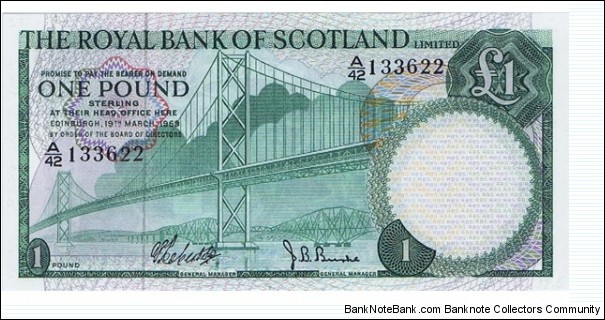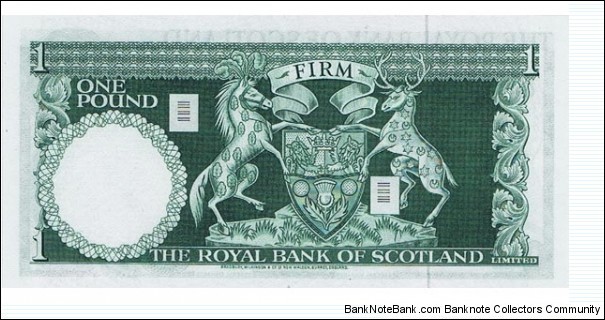-
Posts
1,361 -
Joined
-
Last visited
Content Type
Profiles
Forums
Gallery
Events
Articles
Posts posted by Saor Alba
-
-
I like those post-Civil War era notes, so cool.
BTW I retired six, yup six red seal deuces from my bank today - one '28-G, four 1953's, and a well beaten up 1963.
-
'46 Lincoln - liberated from my wife's change pocket on her purse.
-
I wonder just how those buffers get into circulation? Perhaps collectors salting coinstars?
-
One of my silver's was a 43, the nickel ones were a 40, and a 46. The rest were in the late 40's early 50s.
-
This bleeping topic started me diving into nickels instead of cents - the result, one Buffer, three silvers and lots of early dated S mint Jeffers. I have temporarily dried up all the cents. So nickels it be.
-
1980 Swiss 1/2 franc, a dime sized coin - lying on the tray in front of the machine. I like finding little coins that are worth more than half a dollar.
-
Three New Zealand coins, a bronze 10c coin dated 2005 and two 20c coins dated 2006 and 2007. At first look I thought the 10c coin was a modern British Penny, they are so close in size and appearance.
-
68-D Half in change the other day when I asked if they had any halves. I do like getting silver whenever possible.

-
Two Jefferson nickels, under the machine. Yup, I always look under it!
-

Ah those cheap melt type buys

-
I owned a type set of Nikolai II gold coins that I sold, gees, I had the 5, 7.5, 10 and 15 Ruble. And to think I sold the all of them for like $450 or something on eBay about 10 years ago and thinking that I made money on them. I wish I had the coins now.
-
When my local dealer in USA gets Russian gold, he still treats it as uncollectable junk. So I buy it at melt.

-
A small key. One of the stranger finds in the reject slot.
-
I think it is interesting that the Cyrillic dating on coins kind of lingered for awhile after Arabic numerals made their appearance on some denominations. The whole story of Petr reforming the coinage is fascinating, given that he had meeting with Sir Isaac Newton - then master of the Royal Mint in London during his visit there. I have to believe that Newton somehow informally influenced the changes to the monetary system in Russia - but nobody has pinpointed an a-ha situation where you can make a direct connection. Wire kopeks are kind of cool as novelties, but you sure have to appreciate the momentous change for modernisation when they were eliminated and the new kopeks, altyns, denezhka, etc came out.
-
I think it is interesting that the Cyrillic dating on coins kind of lingered for awhile after Arabic numerals made their appearance on some denominations. The whole story of Petr reforming the coinage is fascinating, given that he had meeting with Sir Isaac Newton - then master of the Royal Mint in London during his visit there. I have to believe that Newton somehow informally influenced the changes to the monetary system in Russia - but nobody has pinpointed an a-ha situation where you can make a direct connection. Wire kopeks are kind of cool as novelties, but you sure have to appreciate the momentous change for modernisation when they were eliminated and the new kopeks, altyns, denezhka, etc came out.
-
Tried out ten rolls today of nickels - I purchased $30 worth of cents and $20 worth of nickels and came up with the following:
1940
1941-D
1946
1952
1955-D X 2
1959-D X 2
1968-S X 2
1969-S
1970-S X 2
Canada
1965 X 2
A total of 15 finds out of ten rolls. Not a bad haul, the Canadians have a higher nickel content and melt value is about 14 cents on them.
-
1957-G German Mark, minted in Karlsruhe. And shortly afterward I very nearly spent it as a quarter.
-
A neat note with the good ship Vasa - well worth a good long visit if you get the chance to see Stockholm. The museum is fantastic.
-
I have a network of banks, I have accounts all over the place, so I also have several tellers on the prowl for the goodies. I am not above subtle means of getting what I want either, gift cards and assorted treats. Several of the tellers call me when the goodies come. They all know about the whole branch doing lunch on me reward if they get a $500 or $1000 bill. One teller I know is a bit of a collector herself - so she has to get numismatic goodies as rewards.
-
I think I need to order some nickel boxes sometime - they are easy searches - I just tend to stick to cents because of the copper mining factor. I probably have about $1000 in pre-1982 in old jugs now.
But first I have to check out the $300 in halves my one bank branch called me about.
-
Today we were on our way home from a shopping trip and drove through the drive thru at McDo's to get a drink. My wife's decision. Anyway I was going to give her some pocket change to pay for the drinks with - but was sluggish getting it out before my wife handed the clerk a $10. I am glad I didn't give her the change, because in the change back I got a neat find - a lightly circulated with still quite a bit of the original finish 1943 steelie - rust free! First time I have ever gotten one that looked fairly new and not rusted out to a bronze colour.
-
Scotland has some realy nice notes.
From 1969, The Royal Bank of Scotland.


That note is significant for several reasons, Royal Bank and National Commercial had just previously merged - so a new design incorporating the Firth of Forth rail bridge from the National Commercial Bank and the new Firth of Forth Road bridge was designed - curiously for the newly formed bank the directors elected to call the bank "The Royal Bank of Scotland Limited" which was effectively a new name, but largely incorporated the old Royal Bank of Scotland name. I have seen a number of colour proofs, even purple, of this design. There are only two varieties, this one that has the two signatures with the Robertson signature carrying over from National Commercial. The next variety is a bit more common and only has Burke's signature on it as the director.
-
Belgium 1 Franc - German Occupation - 1915


In August 1914 in violation of Belgium's neutrality Germany invaded the country from the east, no doubt as part of their plan to invade France to the south through Belgium. The German occupation forces would subsequently start issuing paper money to supplement the Belgian economy during that time. The issues were very unpopular in Belgium, due in no small part to the fact that they were authorised by the German occupiers. The Germans were in a bit of a conundrum though, they couldn't exactly issue paper money with the portraits of King Albert I or Queen Elizabeth of Belgium - so they had to dig into Belgium's past for a historical figure. Marie-Louise of Orleans was the Queen consort of King Leopold I of Belgium, the first king of Belgium. Marie-Louise was the eldest daughter of Louis-Phillipe, then king of France from 1830-1848. She was a very shy and withdrawn young lady of twenty years of age when she married King Leopold in 1832, but would become very well regarded and loved by the Belgian people for her charity activities but she was also remarkable for her beauty.

I like the printing of this note, but admittedly having seen other portraits of Queen Marie-Louise I find that I am somewhat disappointed with her vignette on this note as it seems to not quite accurately portray her. In fact the image appears somewhat insipid, given that it is known she was very attractive. Sadly, she passed away at the age of 38 years in 1850 from tuberculosis.
-
Barclays Bank (Canada) $10 1935


Barclays Bank, while not a immediately familiar name, is actually one of Great Britain's oldest banking institutions. From a founding by goldsmith bankers in 1690 the bank gradually grew into a commercial banking firm and expanded cautiously through the 18th and 19th centuries. The bank's Canadian branch was incorporated in Montreal in 1929 and was a relatively late-comer to issuing banknotes in Canada - and only for a very surprisingly short time. Indeed there were only to be two issues of banknotes, in 1929 and 1935 as by that time the Bank of Canada was being formed and was amalgamating banknote issue into the Crown Corporation of Bank of Canada.
The bank approached the newly formed Canadian Banknote Company to contract print their banknotes, the title of the vignette is "Communication" and is represented by a young lady gazing over a globe depicting North America. The reverse of the note, printed in a very dramatic orange, depicts the bank's headquarters in Montreal.
Barclay's Bank never grew into a very large institution in Canada, with the passing of the Westminster Act in 1931 and greater autonomy for Canada's laws the influx of capital from the London office became more difficult with new currency controls. The effects of the Great Depression and then WWII also had an effect on the balance sheet and by 1956 the officers were approaching other bank's in the interests of merging their operations - subsequently Barclays Bank Canada was absorbed by Imperial Bank of Canada - now known as the Canadian Imperial Bank of Commerce.


Latest Banknote purchases.
in Banknote Forum
Posted
Should have seen what I got at another bank today - a Fed bag of nickels with cool treasures - will enumerate all of the goodies and report in the coin thread.